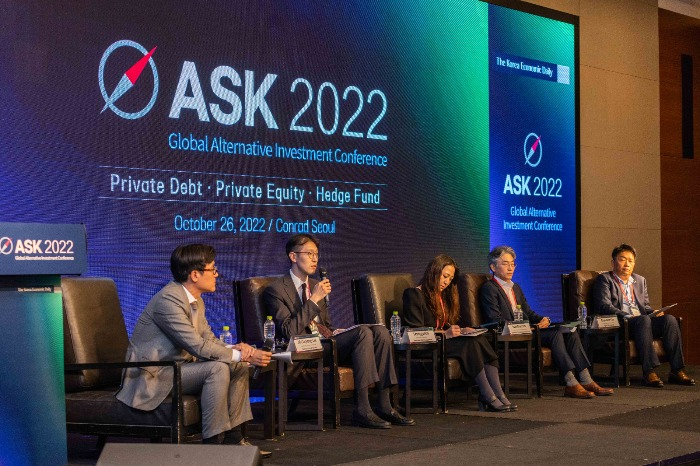ASK 2022
NPS increases exposure to secondaries, direct lending
Both provide capital/liquidity solutions amid increasing market volatility, strategic alternative investment head says
By Oct 28, 2022 (Gmt+09:00)
2
Min read
Most Read
LG Chem to sell water filter business to Glenwood PE for $692 million


Kyobo Life poised to buy Japan’s SBI Group-owned savings bank


KT&G eyes overseas M&A after rejecting activist fund's offer


StockX in merger talks with Naver’s online reseller Kream


Mirae Asset to be named Korea Post’s core real estate fund operator



South Korea’s National Pension Service (NPS) will expand investments via secondaries and direct lending, its Head of Strategic Alternative Investment Team Lee Je-ryang said during an LP session for private equity and debt at ASK 2022 on Oct. 26.
The pension fund is also ramping up co-investments, particularly via sidecar funds that provide opportunities to join sizable investments with global limited partners and asset managers, he said.
NPS is the world’s third-largest pension fund managing 882.7 trillion won ($620.7 billion) in assets as of end-June. Private equity and debt together amount to 56 trillion won, 75% of which is based overseas.
The pension fund increased secondaries and direct lending this year, maintaining the overall asset allocation by region and strategy similar to previous years.
NPS started secondary investments in 2010. Although the secondary market is relatively immature, it is acting as a capital/liquidity solutions provider, alongside direct lending, Lee said.
Over the past decade, the pension fund has built a sound structure to invest in both limited partner-led and general partner-led secondaries. Secondary investments will offer attractive opportunities amid market volatility in the short term, as well as provide capital inflows to the pension fund’s portfolio in the mid to long term, Lee said.
The pension fund is also strengthening its global co-investments. This year, it shortened the investment decision-making process from eight to four weeks for less than a $100 million commitment to project-based co-investment.
It also seeks sidecar funds that lead to sizable co-investment opportunities, one of the key standards when the pension fund selects a GP, Lee said. Sidecar funds offer benefits such as saving costs without management fees and carried interest, as well as efficient communications with GPs on deal flows, he added.
Institutional investors should watch if alternative assets are overrated this year although the asset class tended to be underrated last year, Lee said.
Current market conditions with rate hikes and fears of a looming recession are unfavorable to existing portfolios, but may offer attractive new investment opportunities for those with ample dry powder, a steady investment pace and vintage diversification, he said.
Write to Jihyun Kim at snowy@hankyung.com
Jennifer Nicholson-Breen edited this article.
More to Read
-

-
 Foreign exchangeNPS emerges as savior of Korea’s ailing won currency
Foreign exchangeNPS emerges as savior of Korea’s ailing won currencyOct 20, 2022 (Gmt+09:00)
1 Min read -
 Pension fundsKorea's NPS seeks new CIO as Ahn ends term Oct. 18
Pension fundsKorea's NPS seeks new CIO as Ahn ends term Oct. 18Oct 19, 2022 (Gmt+09:00)
1 Min read -
 Foreign exchangeKorea FX authorities, NPS agree on currency swap; won flat
Foreign exchangeKorea FX authorities, NPS agree on currency swap; won flatSep 23, 2022 (Gmt+09:00)
3 Min read
Comment 0
LOG IN


